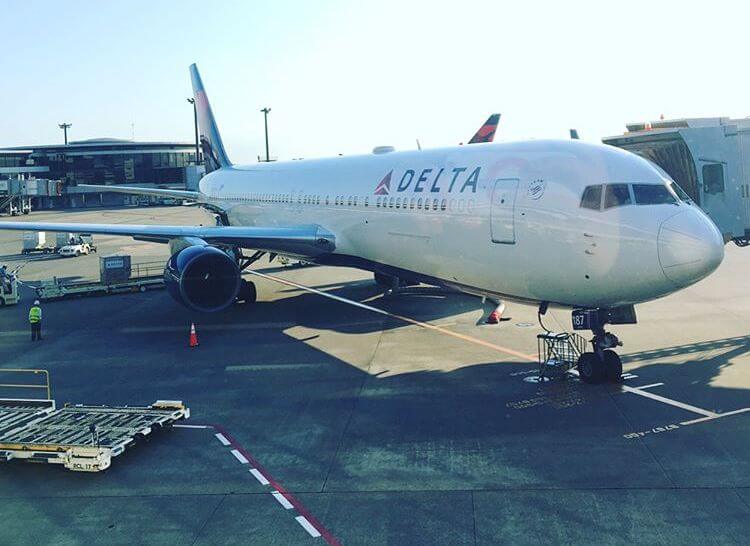How to Get Over a Fear of Flying
Is a fear of flying, or aviophobia keeping you from traveling the world and visiting places you’d like to go to? What if you fear of crashing in a plane, have an aviophobia or get claustrophobic quite easily during a long flight? It’s not uncommon for such people to wonder: “what should I do when I have a panic attack while the plane?” After reading this post, you will have a much better understanding of what is aviophobia and what causes fear of flying? You’ll also learn how to get over a fear of flying, treat it, relax and deal with a panic attack while flying.

Know Your Enemy
I think you’ll agree with me when I say: knowing that flying is the safest way to travel and airplane crashes are super rare isn’t just enough to sit calmly for several hours inside a flying metal tube. With so many so-called experts willing to tell you how to overcome a fear of flying, planes are still going mysteriously missing or being shot down.
According to studies, more people are hurt falling out of bed or being hit with the firework each year than from flying, so why is it people are still afraid?
The reason is that flying phobia isn’t conscious or logical.
You May Also Like: 11 Hacks To Get Through Airport Security Faster
As someone who travels by plane a lot, I know that very often their advice revolves around the theory of distracting yourself via deep breathing, learning about plane safety, and so on. I’m not going to pretend – this is a good piece of advice. However, it’s not enough to help people with a full-blown aviophobia, as it doesn’t address the root cause of fear. You should exactly know what triggers your particular flight-related anxiety and how to change those triggers.
My friends and readers often ask me: why it’s so hard for them to get over an extreme fear of flying? Largely because they can’t dig deep within to identify the root of their fear, preferring to pursue false goals.
Keep in mind, a fear of flying can be made up of multiple different aspects, for example, a fear of crashing coupled with a loss of control, turbulence with heights or having a panic attack mid-flight, etc. Depending on your personality type, I recommend trying different approaches because what works for someone else may not work for you. And vice versa.
Here are 10 Effective Tips to Help you Get Over a Fear of Flying Quickly:
1. Convincing Yourself Won’t Get You Anywhere
Let’s start with the basics – you can’t get over a fear of flying by simply saying to yourself your fear is silly. This will only have the opposite reaction and, in fact, heighten your fear. Emotions, rather than rational thinking, have a more profound impact on our actions.
Therefore, you can not talk yourself out of flying phobia and you can not think yourself better. In a nutshell, the most effective way to get over aviophobia is to start forming new behaviors, new memories and learn methods to control your fears.
2. Identify Your Anxiety Triggers
A fear of flying is made up of many thoughts and beliefs that result from negative experiences. For example, you might have experienced a turbulent flight when you were a kid. At that moment your mind links flying to danger causing your anxiety. Or it could be that you watched a TV program which showed a plane crash and at that moment, you decided to give up flying.
Even experiencing a “bad flight” or strong turbulence with your parents, as well as watching them being scared could have taught you the way you think you should react. When you are unaware of your triggers, you are vulnerable to being unconsciously controlled by them. They still affect your beliefs and choices.
Get over your fear of flying by understanding its origin. Spend some time analyzing the cause of your fear of flying. What are some past negative experiences that influence your behavior and make you associate flying with mortal danger. Once you have identified your anxiety triggers, brainstorm ways to minimize risk and ways in which you can cope with the obstacles you may face.
3. Challenge Your Beliefs
The more anxious flyers fear, the more likely they are to stop flying altogether or fly only when it’s almost unavoidable. Each time they opt for train travel or by car, they feel really good. However, this approach has its own drawbacks. They come to feel their beliefs have protected them in some way, and find that they become more and more phobic over time.
Instead, they should ask themselves whether their beliefs are correct or wrong. Whether they should change a belief in order to stop being afraid of flying. One of the best things you can do in such situations is to find someone with beliefs opposite yours and asking them what they believe and focus on.
4. Set a Positive Anchor to Deal with Anxiety and Fear
The duality of fear and calm cannot exist together. To soothe and calm your soul try to create a new trigger linked to positive feelings and emotions. But how do you do this?
Think about moments that instantly brings up feelings of excitement and remind you of a happy childhood memory of love and comfort, for instance. Imagine going back to that time and notice all the feelings, emotions and images that go with this event. When you have fully connected to this positive event, close your eyes to create a link between the emotion and the feeling of calmness, and as the emotion fades open your eyes.
Conjuring up pleasant mental images of your own past is a process of conditioning the mind with an association between a state of mind or emotional mood, and, an external stimulus that is about previous pleasant experiences. You can re-experience the emotional state as many times as you like by repeating the stimulus.
5. Visualize
As you have probably guessed by now, the key to beating a fear of flying lies in thinking happy thoughts. However, positive thinking is only the first step. Imagining yourself in a safe, comfortable place can be a powerful antidote to fear and anxiety.
Try to focus on this image before the plane takes off. Picture a smooth take off, and a safe landing. Imagine yourself having a great flight, enjoying some delicious food, watching a movie and hanging out at the beach.
6. Change Your Perception of Fear
A lot easier said than done, huh? However, there’s a way.
Start with paying more attention to what you pay attention to. Diversify your views by listening to new people, reading new books and watching new videos. Find out how do planes fly, why don’t they fall out of the sky, etc. Too simple? But it works!
If you never pause to look around, take a break from your routines, or walk another path, then your brain will have a hard time overcoming a fear of flying. Once the information arrives at our brain, it will quickly interpret things, make judgments and decisions, before you even know it. That is something you can’t influence directly. What you can do is to take a moment to pause and reevaluate the situation.
Work on pausing before thinking (not to mention speaking) what your brain considers to be the most obvious thing to think. You can consciously override the first impulse of what to think and consider other options.
7. Overcoming Fear of Flying Should be a “Must”
Set a target for yourself. Fear is just an obstacle standing in your way. You need to push through that fear if you want some really amazing things to happen. Ask yourself what it will cost you if you don’t push yourself through. This will help you discover whether or not getting over a fear of flying is a “must” and not just a “should.”
Fret not though! Try imagining yourself 20 years from now, still fearing of flying, missing out on family events or avoiding taking jobs that require travel.
Now, look back on your life as if you had not pushed the fear away. How has this affected your life? Do you have any regrets? Which of these tips do you wish you had tried? Are you wondering, “What if…?” In this way, you can use flying phobia to propel you towards your objective.
8. Airplane Facts to Overcome Your Fear of Flying Quickly
If you’re just like me, like to know the facts and statistics for a better understanding of the plane and how it flies, here are some tangible facts about air travel to fill your brain with knowledge.
-
- First things first, all aircraft undergo extensive safety testing before they’re sold to airlines. The airline industry is subject to strict regulations that include long and intense pilot training with re-evaluations every six months. Manufacturers test their planes under all conditions and equip them with backup systems for all eventualities. So you can feel safe in the knowledge that air travel is the safest form of travel!
- An aircraft will not take off if it’s not ready for departure. This just doesn’t happen. Nothing can go wrong with the plane because it is checked and tested before each flight. Before you start wondering, well, what about turbulence or storms that can’t always be foreseen?
- Turbulence is not dangerous, it is just uncomfortable. No plane has ever been taken down by turbulence. The plane you fly on has been tested, deemed fit to fly, and can handle 100x more turbulence than the highest amount of turbulence ever recorded
- The civil aviation authority sets regulations that all airlines in the world must comply with and if they don’t they are not permitted to use certain airspace
- A plane can fly and land with zero visibility. However, it does require visibility to park in the airport. This is precisely why a flight might be diverted to another airport due to bad weather conditions
- Both Boeing and Airbus are more than capable of flying safely on one engine. Their pilots practice flying in such conditions. Naturally, if this does occur and the other engine stops, they will land as quickly as possible.
- Most systems on board have at least three backup systems (for engine compensation and navigation, for example). These are the basics of any pilot training process
- If something occurs that requires emergency landing, oftentimes a plane will circle to burn off fuel. Pilots do this to burn off excess fuel, which is held mostly in the wings of the plane and puts a lot of stress on the aircraft
9. Emotional Freedom Technique (EFT)/Tapping
It may sound unusual but EFT healing technique can actually help relieve stress and anxiety. By tapping on specific energy acupuncture points on your face and body you can overcome old fears, limiting beliefs and negative patterns. When you stimulate the reflex points of the face in any place you trigger the amygdala (the part of the brain involved in decision-making and emotional responses) and signal it to calm down.
Tap your hands, fingers (either side of the nail), eyebrows, chin, collar bone and top of the head for the best results. Your fear will disappear quickly as soon as the amygdala gets the memo that it’s safe to relax. I’ve found EFT to be one of the best ways to bust through fear in a matter of minutes!
10. Pack a Carry-On Care Package
And finally, to make things a bit easier for you while flying, bring a little care package. The one that I used to pack for my flights when I was a beginner flyer included ear plugs, my favorite snacks, a notebook, and a neck pillow. This stuff should have helped me to feel completely happy and comfortable. Also, download some calm sleep music or meditation podcasts to play during the flight.
The Bottomline
On my recent flight from Thailand to Germany, the plane experienced some turbulence. What really helped calm me down on that flight was thinking of it the same as the turbulence I get in a car. While any road can get bumpy, it’s the same with a plane. The plane itself is fine – it’s just the air is a bit bumpy.
Getting over a fear of flying is an active process that requires some effort. Even if you decide to try my suggestions on how to get over your fear of flying, it won’t happen overnight. But these techniques will eventually help you calm down. You just need to figure out what works for you. I don’t spend days or weeks panicking and feeling so overwhelmed anymore. Once again, I love traveling and traveling the world without flying can be a daunting task.





